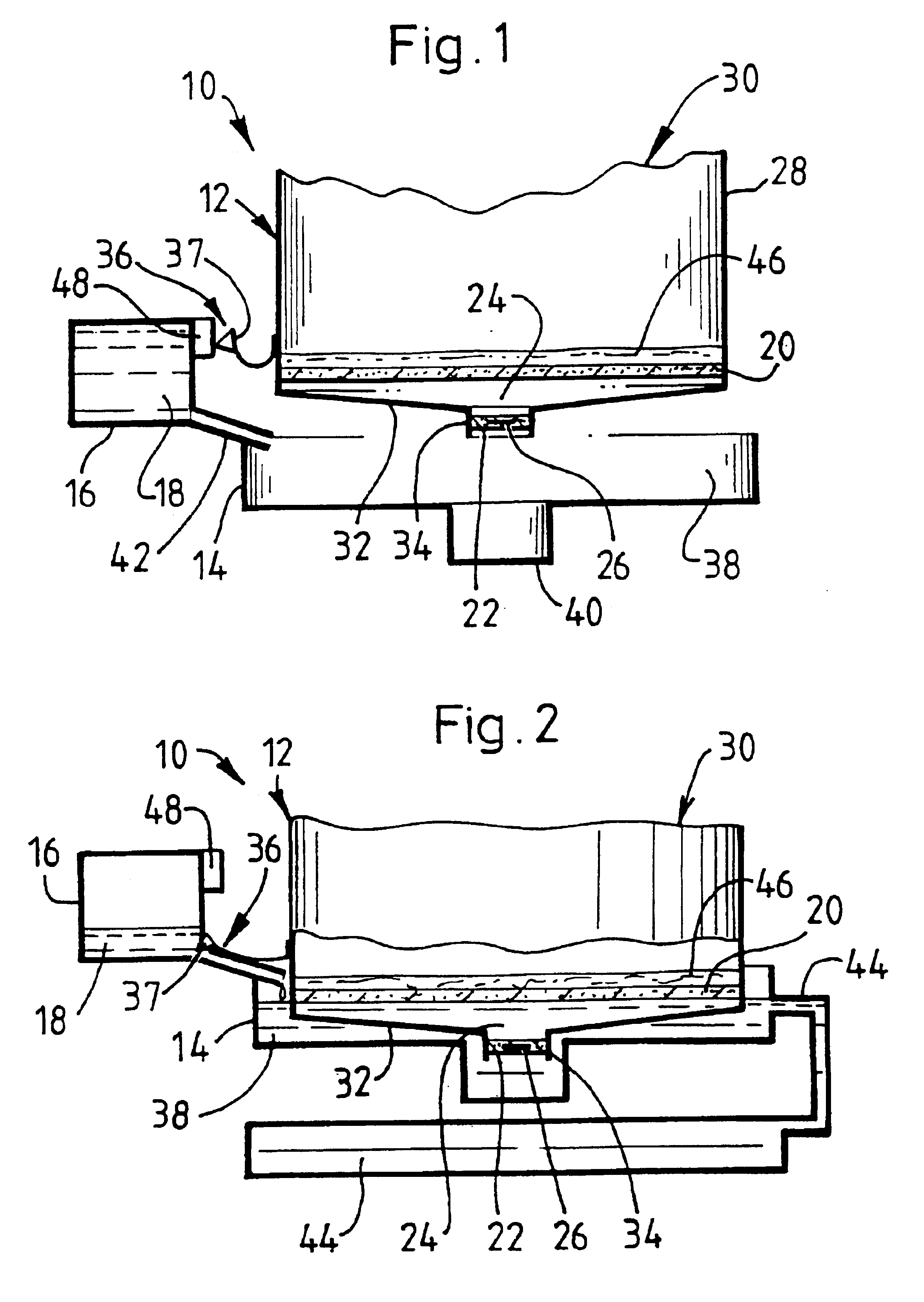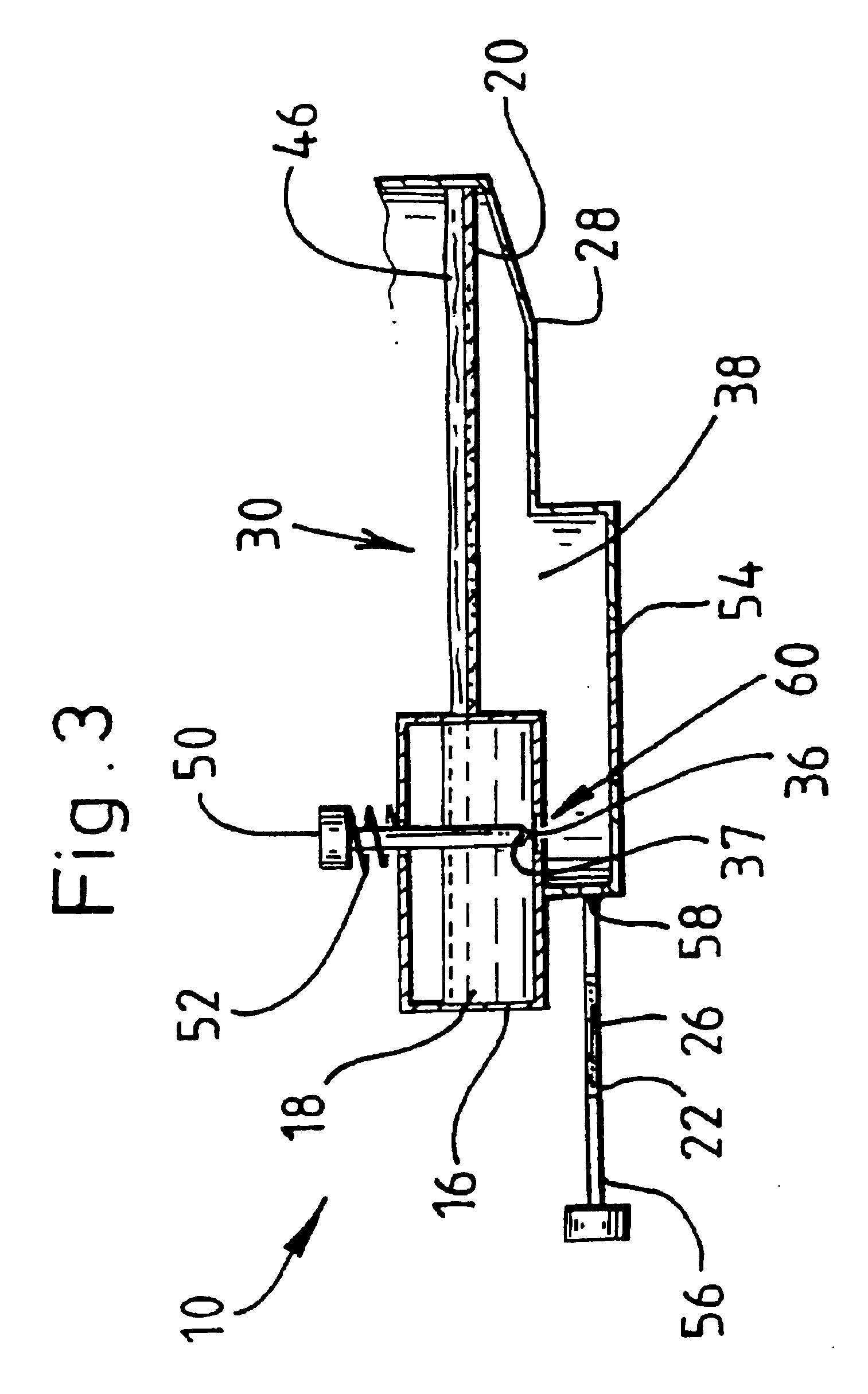Separation and detection of spermatozoa
a technology for spermatozoa and spermatozoa, applied in the field of spermatozoa separation and detection apparatus, can solve the problem of not distinguishing between motile and non-motile spermatozoa, and achieve the effect of reducing motility
- Summary
- Abstract
- Description
- Claims
- Application Information
AI Technical Summary
Benefits of technology
Problems solved by technology
Method used
Image
Examples
experiment 1
A swim up from a semen sample is prepared (Practical Laboratory Andrology--David Mortimer, page 272) and the resultant preparation of motile spermatozoa is used for the assessment of sperm toxicity of the filter. A 2 cm by 2 cm square of the filter is cut into 2 mm by 1 cm strips. 3.times.1 ml aliquots of the freshly prepared motile sample are added to round bottom tubes (eg., Falcon no. 2001 or 2037) marked duplicate A, duplicate B and control C. 10 of the thin strips of filter are placed in each of duplicate A and B. A, B and C are then incubated at 37.degree. C. for 1 hour with frequent agitation. Sperm motility and / or sperm vitality assessment is then performed (Practical Laboratory Andrology, pages 49-50 for motility and pages 66-69 for vitality) on both duplicates and the control. A marked difference in sperm motility and or vitality between the filter containing sample and the control indicates that the filter is toxic to sperm.
experiment 2
on of sperm "wicking" through a filter
200 .mu.l of liquefied semen is placed in a round bottom tube. A 0.5 cm by 4 cm strip of filter is then introduced to the semen sample, such that only the lower 1-2 mm of the filter is in direct contact with the semen sample. In some filters, the semen sample will move by capillary action or "wick" up the filter taking with it motile and non-motile spermatozoa, therein invalidating the separation. The extent of wicking in a given time frame eg. 15 minutes, can be determined by removing the filter from the semen sample and analysing with light microscopy 2 mm segments of the filter for the presence of spermatozoa. In order to be an effective separator of motile spermatozoa from a mixture of motile and non-motile sperm, the extent of wicking in the filter (in the time frame that the sample will be left applied to the filter prior to detection or collection of the filtered motile sperm) should be less than the thickness of the filter.
experiment 3
a filter to prevent the passage of dead or immobile spermatozoa
A sample of dead or immobilised sperm is obtained by either heating a semen sample at 95.degree. C. in a water bath or by adding a 10% cyanide solution. 200 .mu.l of a dead or immobilised semen sample is applied to the upper surface of the filter, the underside of the filter being in direct communication with 1 ml of EBSS. After 5, 10, 15 and 30-minute intervals, a 10 .mu.l aliquot of the filtrate is removed and examined under light microscopy for the presence of spermatozoa. An effective filter will not allow the passage of dead or immobile spermatozoa for the duration that the semen sample is required to be in contact with the upper surface of the filter.
PUM
| Property | Measurement | Unit |
|---|---|---|
| Molar density | aaaaa | aaaaa |
| Fraction | aaaaa | aaaaa |
| Fraction | aaaaa | aaaaa |
Abstract
Description
Claims
Application Information
 Login to View More
Login to View More - R&D
- Intellectual Property
- Life Sciences
- Materials
- Tech Scout
- Unparalleled Data Quality
- Higher Quality Content
- 60% Fewer Hallucinations
Browse by: Latest US Patents, China's latest patents, Technical Efficacy Thesaurus, Application Domain, Technology Topic, Popular Technical Reports.
© 2025 PatSnap. All rights reserved.Legal|Privacy policy|Modern Slavery Act Transparency Statement|Sitemap|About US| Contact US: help@patsnap.com



